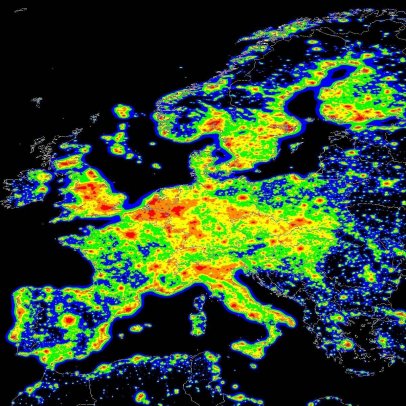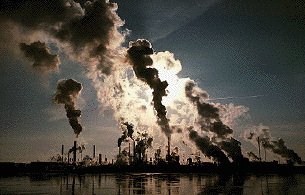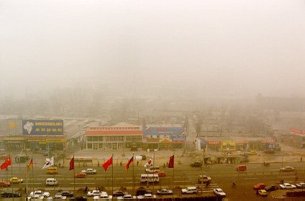 |  |
 |
The larger picture shows Western Europe and where air pollution is greatest. Measurements of pollution and smoke airborne particles are important because, depending upon the type of particles produced, human pollution can either have a warming or cooling influence on climate, and they can either increase or decrease regional rainfall.
The picture to the top right is a typical picture of Industrial pollution caused through the current Primary Energy sources of oil, gas and coal.
The final picture depicts parts of present day China and where the problem of air pollution has reached a critical level already. China's levels of total suspended particulates (TSP) and sulfur dioxide (SO2), two types of air pollution, are among the world's highest. In 1995, the World Health Organization monitored 88 cities for SO2, and more than half of these were above the standard levels of acceptability. Coal is the primary source for SO2 emission, yet more than three quarters of China's commercial primary energy needs comes from coal. SO2 levels are highest in northern China, because coal is used to heat homes and buildings several months out of the year. Comparatively, while northern China uses far more coal, the coal that is mined and burned in southern China is high in sulfur and extremely polluting. While industrial air pollution is still the major source of China's overall air pollution, levels stemming form the transportation sector are becoming more alarming. China is fast shifting towards increased vehicle use. The number of motor vehicles on China's roads has tripled since 1984, and continues to grow. Yet the actual number of vehicles being driven does not have such an impact on air pollution as does the country's low emission standards, poor roads, and outdated technology. Emission standards in China are equivalent to the standards for developed countries during the 1970s. Furthermore, cars in China are fueled by leaded gasoline, and lead exposure has been proven to be a significant health hazard.
But alarmingly and although China has ratified and signed the Kyoto Protocol, it will not have to start implementing its Kyoto obligations until 2012 due to it being a developing nation - in 7-years time and on its present path, China could quadruple its primary energy requirements without any pressure being placed upon it under the Kyoto Agreement. Alarmingly again, this goes for India too!
Therefore there cannot be any illusions now that humankind has immense future energy and pollution problems sitting on the horizon of time.
I would also mention here that it is estimated that up to 60% of all primary energy production throughout the world is, believe it or not, consumed by buildings. Therefore present building designs have a lot to answer for and where the construction industry has been extremely slow to change its modus operandi and especially with regard to energy-efficient designs. Indeed, in a recent survey carried out by the WIF in Britain architectural students told us that energy design in buildings was something that was not on the syllabus. If this is the universal case Governments must act swiftly to change this situation.